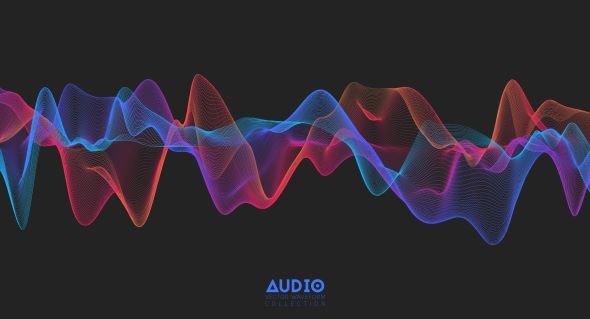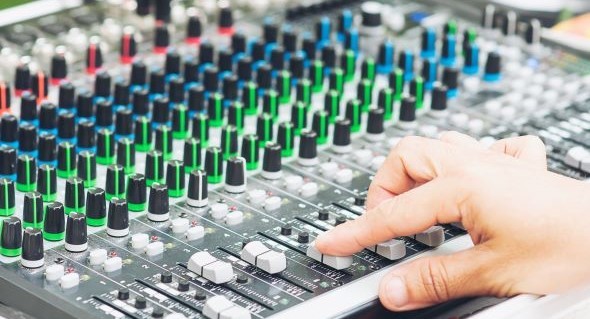-
Graphics & Design
- UI UX Design
- Graphic Design
- Website Design
- Logo Design
- Business Cards & Stationery
- Illustration
- Children’s Book Illustration
- Portraits & Caricatures
- Cartoons & Comics
- Storyboards
- NFT Art
- Landing Page Design
- Icon Design
- Game Art
- Graphics for Streamers
- Flyer Design
- Brochure Design
- Poster Design
- Catalog Design
- Menu Design
- Image Editing
- Presentation Design
- Background removal
- Infographic Design
- Vector Tracing
- Resume Design
- Social Media Design
- Social Posts & Banners
- Email Design
- Web Banners
- Signage Design
- Packaging & Label Design
- Book Design
- Book Cover Design
- Architecture & Interior Design
- Landscape Design
- Building Engineering
- T-Shirts & Merchandis
- Fashion Design
- Jewelry Design
- 3D Modeling & Rendering
- 3D Garment Design
- 3D printing characters
- 3D game art
- Brand Style Guides
- Fonts & Typography
- App Design
- AI Artists
- AI Avatar Design
- Pattern Design
- Tattoo Design
- Building Information Modeling
- Industrial & Product Design
- Character Modeling
- Trade Booth Design
- Album Cover Design
- Podcast Cover Art
- Car Wraps
- Invitation Design
- 3D Jewelry Design
- Thumbnails Design
- Design Advice
-
Programming & Tech
- Wordpress
- Php Developer
- Frontend Developer
- Backend Developer
- Business website
- E-commerce Website
- Landing Page
- Dropshipping website
- Shopify
- Wix
- Custom Websites
- Website Customization
- Bug Fixes
- Backup & Migration
- Speed Optimization
- AI Chatbot
- AI Applications
- AI Integrations
- AI Agents
- AI Model Fine-Tuning
- Custom GPT Apps
- Discord
- Telegram
- Botpress
- Tiktok
- Facebook Messenger
- PC Game
- Mobile Game
- Console Game
- VR Game
- Cross-Platform
- Smartwatch
- VR Headset
- Support & IT
- Cloud Computing
- DevOps Engineering
- Cybersecurity
- Convert Files
- Web Application
- Desktop Applications
- API & Integrations
- Scripting
- Browser Extensions
- Wallet Development
- NFT Development
- Android App
- IOS App
- Website to App
- Website Development
- Website Maintenance
- Game Development
- Chatbot Development
- Software Development
- AI Development
- Plugins Development
- Mobile App Development
- Cross-Platform Development
- Android App Development
- IOS App Development
- Mobile App Maintenance
- Webflow
- GoDaddy
- Squarespace
- WooCommerce
- Ebay
- Development for Streamers
- Blockchain & Cryptocurrency
- Electronics Engineering
- QA & Review
- User Testing
- Online Coding Lessons
-
Video & Animation
- Visual Effects
- Video Art
- Intro & Outro Videos
- Video Templates Editing
- Subtitles & Captions
- Video Ads & Commercials
- Social Media Videos
- UGC Videos
- Slideshow Videos
- Character Animation
- Animated GIFs
- Animation for Kids
- Animation for Streamers
- Rigging
- NFT Animation
- Logo Animation
- Lottie & Web Animation
- Text Animation
- Videographers
- Filmed Video Production
- Animated Explainers
- Live Action Explainers
- Spokespersons Videos
- Screencasting Videos
- eLearning Video Production
- Crowdfunding Videos
- 3D Product Animation
- E-Commerce Product Videos
- Corporate Videos
- App & Website Previews
- AI Video Art
- AI generated music videos
- AI avatar spokespersons videos
- Article to Video
- Game Trailers
- Meditation Videos
- Real Estate Promos
- Book Trailers
- Video Advice
- Product Photographers
- Portrait Photographers
- Lifestyle & Fashion Photographers
- Video Editing Service
- Music Video
-
Digital Marketing
- Search Engine Optimization (SEO)
- Branding
- Social Media Marketing
- Local SEO
- E-Commerce SEO
- Video SEO
- Paid Social Media
- Influencer Marketing
- Community Management
- Video Marketing
- E-Commerce Marketing
- Email Marketing
- Guest Posting
- Display Advertising
- Public Relations
- Text Message Marketing
- TikTok Shop
- Facebook Ads Campaign
- Instagram marketing
- Google SEM
- Shopify marketing
- Marketing Strategy
- Marketing Advice
- Web Analytics
- Music Promotion
- Podcast Marketing
- Book & eBook Marketing
- Mobile App Marketing
- Crowdfunding
- Other
- Search Engine Marketing (SEM) Services
- Affiliate Marketing
-
Writing and Translation
- Content Writing
- Website Content
- Article and Blog Post
- Video Editing
- Content Strategy
- Scriptwriting
- Creative Writing
- Podcast Writing
- Speechwriting
- Research & Summaries
- Business, finance & law articles
- Health & medical articles
- Internet & technology articles
- News & politics articles
- Marketing articles
- Real estate articles
- Proofreading & Editing
- AI Content Editing
- Writing Advice
- Book & eBook Writing
- Book Editing
- Beta Reading
- Resume Writing
- Cover Letters
- LinkedIn Profiles
- Job Descriptions
- Brand Voice & Tone
- Case Studies
- White Papers
- Product Descriptions
- Ad Copy
- Sales Copy
- Email Copy
- Social Media Copywriting
- Press Releases
- UX Writing
- Translation
- Localization
- Transcription
- eLearning Content Development
- Technical Writing
- Business Names & Slogans
-
Music & Audio
- Music Producers
- Composers
- Singers & Vocalists
- Session Musicians
- Songwriters
- Jingles & Intros
- Custom Songs
- Mixing & Mastering
- Audio Editing
- Vocal Tuning
- Voice Over
- Female voice over
- Male voice over
- Podcast Production
- Audiobook Production
- Audio Ads Production
- Voice Synthesis & AI
- DJ Drops & Tags
- DJ Mixing
- Remixing
- Sound Design
- Meditation Music
- Audio Logo & Sonic Branding
- Custom Patches & Samples
- Online Music Lessons
- Music Transcription
- Music & Audio Advice
- Beat Making
- Pitch Decks
-
Business
- Virtual Assistant
- Project Management
- HR Consulting
- Online Investigations
- Supply Chain Management
- E-Commerce Store Management
- Amazon store management
- Shopify e-commerce management
- Etsy store management
- Business Registration
- Business Plans
- Business Consulting
- Market Research
- Presentations
- Product Management
- ERP Management
- AI Strategy
- AI Lessons
- Accounting & Bookkeeping
- Tax Consulting
- Financial Forecasting & Modeling
- Financial Consulting
- Applications & Registrations
- Legal Documents & Contracts
- Legal Review
- Legal Consulting
- Sales
- Lead Generation
- Call Center & Calling
- Customer Care
- CRM Management
- Career Counseling
- Life Coaching
- Fact Checking
- Event Management
- Sustainability Consulting
- Software Management
-
Lifestyle
- Online Tutoring
- Language Lessons
- Arts & Crafts
- Puzzle & Game Creation
- Traveling
- Collectibles
- Astrology & Psychics
- eSports Management & Strategy
- Game Matchmaking
- Ingame Creation
- Gameplay Experience & Feedback
- Game Recordings & Guides
- Achievement Hunting
- Fitness Lessons
- Workout Plans
- Recipe Creation
- Meal Plans
- Guided Meditation
- Modeling & Acting
- Trend Forecasting
- Embroidery Digitizing
- Greeting Cards & Videos
- Cosmetics Formulation
- Family & Genealogy
Blog Details
- Home
- Blog Details

Crafting the Perfect Soundscape: A Beginners Guide to Sound Design Mastery
Introduction:
Have you ever watched a movie so immersive that you felt like you were a part of the scene? Or played a video game where the sounds were so realistic you could almost feel the environment around you? That's the magic of sound design – an art form that breathes life into visual content, making it a multi-sensory experience. Sound design is not just about making noise; it's about creating an auditory world that enhances the storytelling. Whether you're an aspiring filmmaker, a game developer, or just a curious enthusiast, this guide will walk you through the essentials of making the perfect sound design.
Understanding the Basics of Sound Design:
Before you dive into creating your own soundscapes, it's important to understand what sound design entails. Learn about the different elements of sound, such as pitch, volume, and timbre, and how they can be manipulated to evoke specific emotions or reactions from your audience.
The Tools of the Trade:
Discover the software and equipment that professional sound designers use to capture and manipulate sounds. From digital audio workstations (DAWs) to field recorders and microphones, we'll break down what you need to get started and offer budget-friendly alternatives for those just dipping their toes into the sonic waters.
Recording Your Own Sound Effects:
There's something incredibly satisfying about recording your own sound effects. We'll go over techniques for capturing high-quality audio in various environments, and how to avoid common pitfalls that can ruin a good recording. Plus, we'll share tips on building your own sound effects library.
Foley Artistry – Bringing Scenes to Life:
Foley is the art of creating everyday sound effects that are added to film, video, and other media in post-production. Learn how foley artists use creativity and everyday objects to produce believable sounds that sync with the on-screen action.
Layering and Mixing:
Sound design is not just about individual sounds; it's about how those sounds work together. We'll explore how to layer different sounds to create depth and how to mix them to maintain clarity and focus where it's needed.
Ambience and Environmental Sounds:
Ambience is key to creating a believable setting. Whether you're crafting the bustling background of a city or the tranquil atmosphere of a forest, we'll discuss how to use ambient sounds to set the scene and immerse your audience in the environment.
Music and Sound Design:
Music is a powerful tool in storytelling. We'll touch on the relationship between music and sound design, and how to use them together to enhance the emotional impact of your project.
The Emotional Impact of Sound Design:
Sound can make or break the audience's emotional connection to the content. We'll delve into the psychology of sound and how to use it to influence the audience's feelings and reactions.
Finalizing Your Sound Design:
Once you've created your soundscape, it's time to polish it. We'll go over the final steps in the sound design process, such as mastering the audio and ensuring that your sound design translates well across different playback systems.
Conclusion:
Sound design is a journey of exploration and creativity. With the right knowledge and tools, anyone can start crafting soundscapes that captivate and mesmerize. Remember, the perfect sound design doesn't just happen; it's carefully sculpted with patience, attention to detail, and a keen ear. So plug in your headphones, fire up your DAW, and start experimenting. Your perfect soundscape awaits!
Remember, the aim of this blog post is not just to inform but to inspire your readers to explore the world of sound design. Keep the tone casual, engaging, and encouraging, as if you're talking to a friend who's eager to start their own sound design journey.
